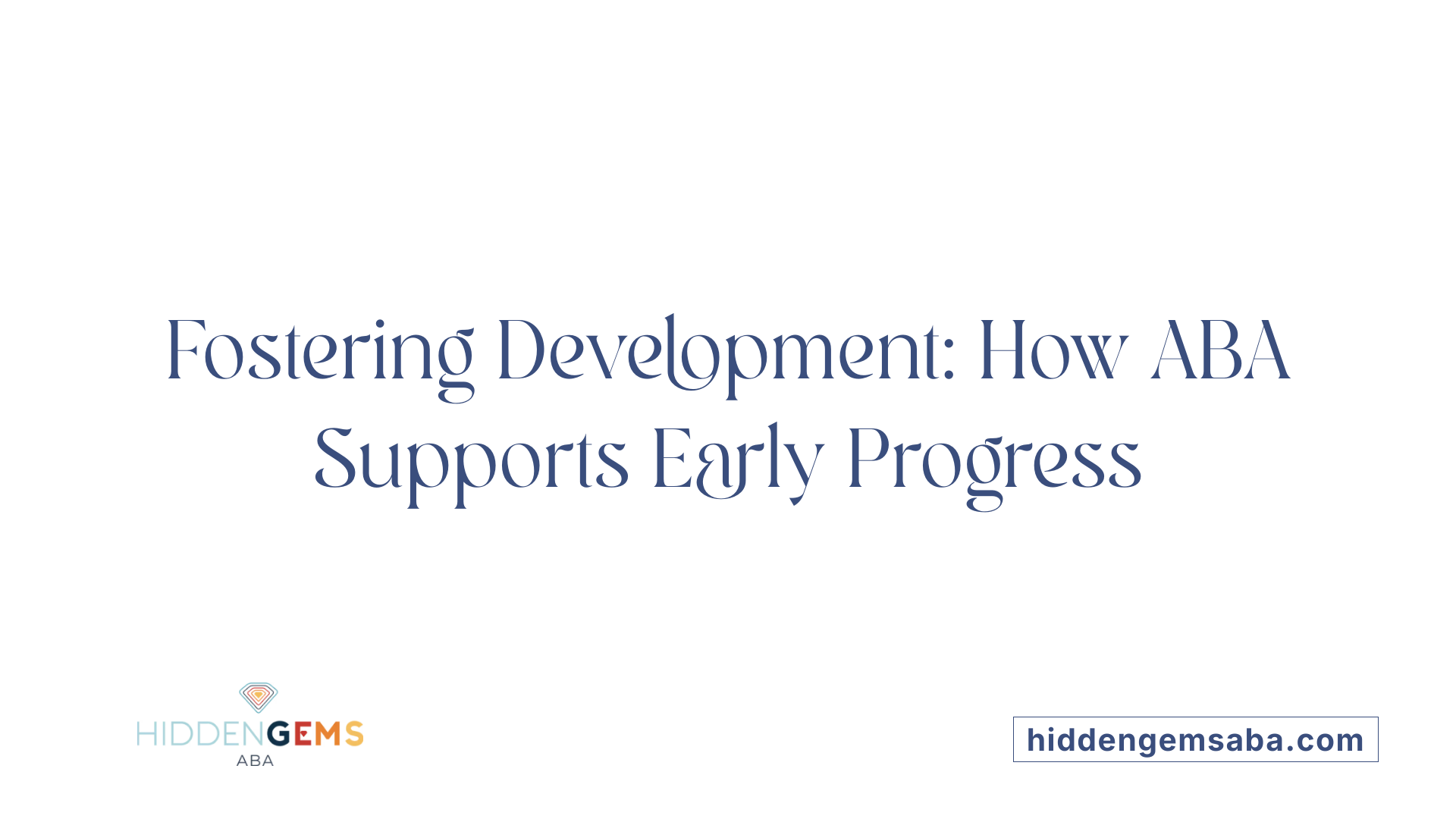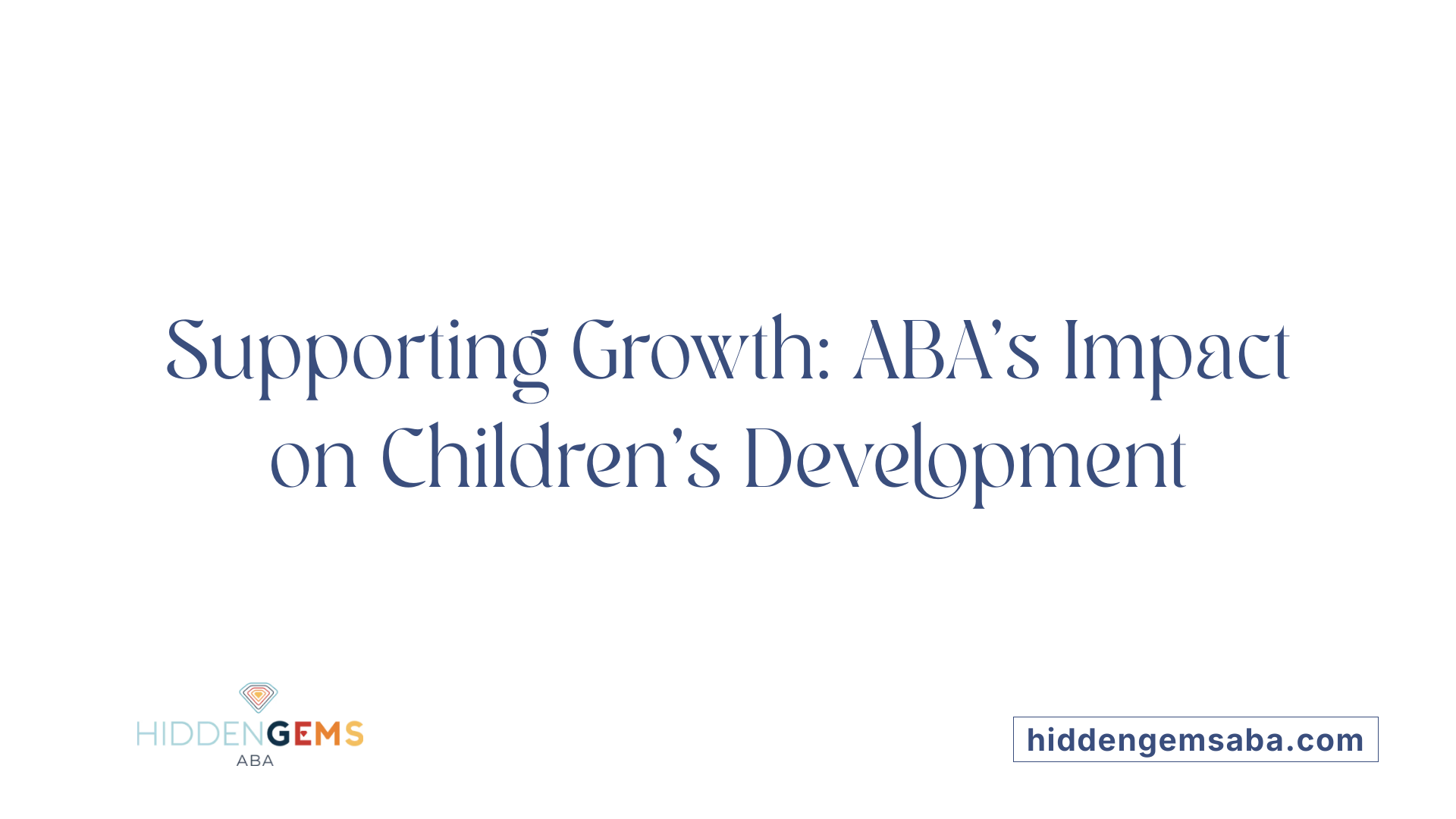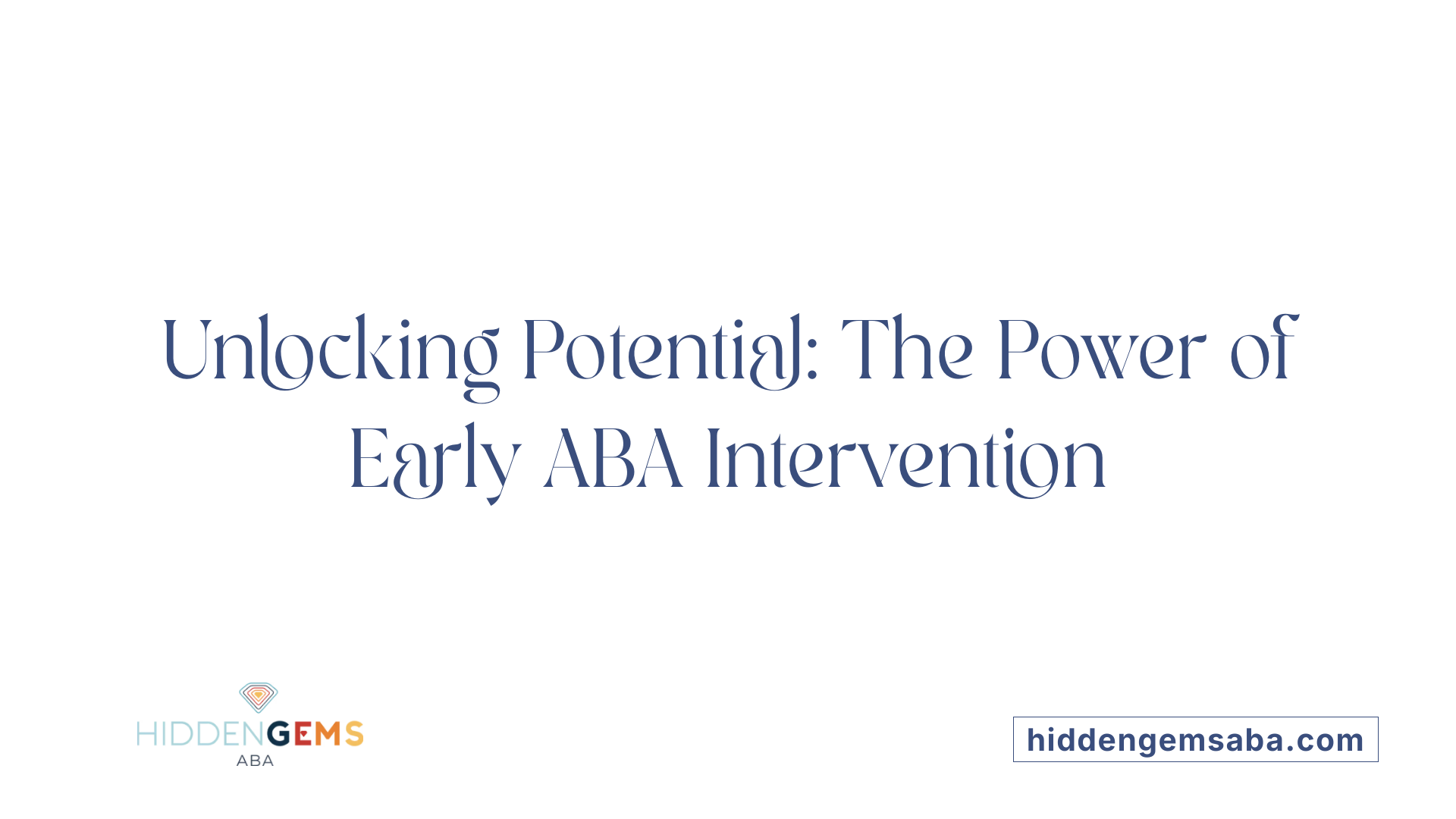Understanding ABA Therapy and Its Role in Child Development
Applied Behavior Analysis (ABA) therapy is widely recognized as a highly effective, evidence-based intervention for children with autism spectrum disorder (ASD) and other developmental delays. Rooted in the science of learning and behavior, ABA focuses on systematically teaching new skills and reducing problematic behaviors through tailored strategies. Over decades of research and practice, ABA has evolved into a comprehensive, adaptable approach that can significantly enhance communication, social skills, independence, and overall quality of life for children and their families.
Fundamental Principles and Techniques of ABA Therapy
What is ABA therapy and what are its fundamental principles?
Applied Behavior Analysis (ABA) is a scientifically validated approach designed to improve meaningful skills and reduce problematic behaviors in children, especially those with autism spectrum disorder. At its core, ABA relies on the principle that behavior is influenced by the environment, and that with strategic interventions, desired behaviors can be reinforced and problematic ones diminished.
A central framework in ABA is the A-B-C model, which stands for Antecedent, Behavior, and Consequence. This model helps analyze how specific triggers (antecedents) lead to behaviors, which are then influenced by the outcomes (consequences). By understanding these sequences, therapists can develop targeted strategies to modify environmental cues and reinforce positive behaviors.
Positive reinforcement is a core component of ABA. It involves rewarding behaviors that we want to see more often, which encourages children to repeat those behaviors. This method not only helps in skill acquisition but also in decreasing unwanted behaviors such as tantrums or aggression.
Treatment plans are highly personalized. Board Certified Behavior Analysts (BCBAs) conduct thorough assessments to understand each child's unique strengths and needs. Based on this, they craft tailored interventions that adapt as the child progresses. This individualized approach ensures therapies are both effective and respectful of the child’s pace and preferences.
ABA employs various techniques to foster learning across different settings. Discrete Trial Training (DTT) involves structured, repetitive tasks to teach specific skills. Pivotal Response Treatment (PRT) targets key areas like motivation and social engagement to produce broad developmental improvements. Naturalistic methods incorporate playful, everyday activities to facilitate learning in more natural environments, promoting generalization of skills.
Overall, ABA aims to create meaningful behavior change by systematically manipulating environmental factors, fostering increased independence, communication, and social participation. Its evidence-based practice makes it a foundational intervention for supporting children with developmental delays, with the goal of improving their quality of life and long-term outcomes.
The Benefits of Early and Intensive ABA Intervention

What are the main benefits of ABA therapy for children with developmental delays or autism?
ABA therapy provides a wide array of advantages for children with developmental delays and autism spectrum disorder (ASD). It employs research-backed methods that are tailored to each child’s unique needs, leading to notable improvements in communication, social skills, and language development.
Early ABA intervention is particularly effective because it leverages the brain's plasticity during critical developmental periods. This means that children can acquire essential skills such as self-care, dressing, and toileting more rapidly, fostering greater independence and confidence.
Research, including the seminal study by Lovaas (1987), highlights that intensive early ABA programs significantly enhance cognitive abilities and daily living skills. These early interventions help prevent problematic behaviors from becoming ingrained, improving the child’s ability to function independently in daily life.
By focusing on positive reinforcement and systematic teaching, ABA also helps reduce challenging behaviors such as tantrums, aggression, and self-injury. As children progress, they gain better emotional regulation and social participation, paving the way for improved relationships and community involvement.
Long-term benefits include higher chances of academic success, increased independence, and a better quality of life. Many children who receive early, intensive ABA therapy continue to show improvements into adolescence and adulthood, often requiring less intensive support later in life.
Overall, ABA therapy’s personalized approach and evidence-based strategies make it a powerful tool for fostering meaningful and lasting developmental growth in children with autism, providing them with the skills they need for a more independent, fulfilling future.
Supporting Early Intervention for Developmental Progress

How does ABA therapy support early intervention and developmental progress in children?
ABA therapy plays a vital role in early intervention for children with autism spectrum disorder (ASD). By harnessing the brain’s plasticity during crucial developmental years, typically around ages 2 to 5, ABA helps foster essential skills that lay the foundation for future learning and independence.
Starting ABA therapy early allows children to develop critical abilities in areas such as communication, social interaction, and self-care. These skills are acquired more effectively when intervention begins promptly, preventing problematic behaviors from becoming deeply ingrained. The approach involves individualized, data-driven strategies that target each child’s specific needs, ensuring interventions are relevant and effective.
ABA therapy also focuses on strengthening neural connections through positive, structured teaching techniques like reinforcement and systematic assessment. This promotes meaningful learning across settings—home, school, and community—leading to better generalization of skills. Family involvement and collaboration with other service providers are essential components, supporting ongoing progress outside of therapy sessions.
Research shows that early ABA intervention not only improves immediate skill acquisition but also results in long-term benefits, such as increased independence, improved social functioning, and enhanced overall quality of life. The personalized nature of ABA ensures that children are supported in developing the skills necessary for successful integration into daily life.
| Aspect | Focus | Impact |
|---|---|---|
| Brain Plasticity | Leverages critical developmental periods | Facilitates rapid learning and neural growth |
| Skills Acquired | Communication, social skills, self-care | Builds a strong foundation for independence |
| Prevention | Addresses problem behaviors early | Reduces the risk of behaviors becoming ingrained |
| Family Role | Active involvement and training | Reinforces progress and consistency |
| Long-term Outcomes | Independence, social skills | Leads to sustained improvements in overall functioning |
Overall, early ABA intervention is a proven method to support the developmental progress of children with autism, enabling them to reach their full potential with lasting positive effects.
Techniques, Methodologies, and Modern Practice of ABA

What techniques and methodologies are used in ABA therapy?
ABA therapy utilizes a broad spectrum of techniques grounded in behavioral science to effectively teach skills and reduce harmful behaviors in children with autism. One of the most prominent methods is positive reinforcement, which involves rewarding desirable behaviors to encourage their repetition and mastery. Prompting and fading are also key strategies; prompts are cues that help children perform a task, and these are gradually reduced over time to foster independence.
Structured approaches like Discrete Trial Training (DTT) provide intensive, systematic instruction through repeated trials, focusing on specific skills such as language or social behaviors. DTT typically involves a clear sequence of a cue, the child's response, and a reward, following the ABC model (Antecedent, Behavior, Consequence).
In addition, natural environment training emphasizes teaching skills in the child’s everyday settings, such as home or school, making learning more relevant and applied. Visual aids, including picture exchange communication systems (PECS), facilitate communication and help children who struggle with verbal expression.
Play-based strategies like Pivotal Response Treatment (PRT) and the Early Start Denver Model (ESDM) have gained popularity for their respectful and engaging approach. These methods embed teaching within natural play activities, promoting motivation, social engagement, and broader developmental gains.
Furthermore, techniques such as behavior chaining break complex skills into smaller, manageable steps, allowing children to learn routines progressively. Across these methodologies, data collection and ongoing assessment ensure the therapy is tailored to each child's evolving needs.
Over time, ABA therapy has evolved from more rigid, structured methods to incorporate respectful, person-centered practices. Modern ABA emphasizes collaboration with families, dignity, and functional skills, aligning with current research and ethical standards to support meaningful long-term outcomes.
Research, Evidence, and Evolving Perspectives
What is the evidence base for ABA therapy and how effective is it?
Since its development in the 1960s, ABA (Applied Behavior Analysis) has accumulated extensive scientific support. Over the decades, numerous high-quality studies, systematic reviews, and meta-analyses have confirmed its effectiveness for children with autism spectrum disorder (ASD). Research shows that intensive and long-term ABA interventions can lead to significant improvements in various developmental domains.
For example, quantitative analyses report effect sizes such as g=0.74 for IQ improvements and g=0.65 for communication skills, highlighting meaningful gains in cognitive and language abilities. Controlled studies, alongside single-case experimental designs, demonstrate that ABA can reduce problematic behaviors like aggression, tantrums, and self-injury.
Functional Behavior Assessments (FBAs) and data collection methods underpin tailored intervention plans, showing measurable progress over time. Evidence consistently supports ABA's role in fostering skills in communication, social interaction, daily living, and academic tasks. The data affirms that early and sustained ABA therapy provides lifelong benefits, including increased independence and improved quality of life.
As an evidence-based practice, ABA is endorsed by organizations like the U.S. Surgeon General and the American Psychological Association. Ongoing research continues to refine strategies, emphasizing positive, respectful, and person-centered approaches that respect neurodiversity, while maintaining scientific rigor. Overall, the wealth of evidence underscores ABA’s critical role in supporting children with autism and developmental delays.
ABA’s Role in Supporting Children with Autism and Developmental Disabilities

What role does ABA therapy play in supporting children with autism and other developmental disabilities?
Applied Behavior Analysis (ABA) therapy is a widely recognized, science-based approach that helps children with autism spectrum disorder (ASD) and developmental delays. It focuses on increasing positive behaviors and essential skills such as communication, socialization, and independence, while reducing problematic behaviors like tantrums or self-injury.
ABA therapy develops individualized treatment plans tailored to each child's unique needs. These plans are crafted by trained professionals, including Board Certified Behavior Analysts (BCBAs), who analyze behaviors through assessments and data collection. The goal is to make meaningful progress in areas critical to daily life and social participation.
One of the guiding principles of ABA is reinforcement. Desirable behaviors are encouraged by rewarding the child to promote their repetition, leading to skill acquisition. Techniques like play-based learning and natural environment teaching help children learn in engaging and developmentally appropriate ways.
Research confirms that early and intensive ABA therapy generates significant improvements. Children often develop better language, communication, and social skills. Many become more independent, capable of handling daily routines and participating in social activities with greater ease.
This structured yet flexible approach adapts to each child's evolving needs and strengths. It emphasizes respectful, positive interactions that foster a child's confidence and motivation.
In summary, ABA’s systematic methodology—combining personalized intervention, evidence-based techniques, and interdisciplinary collaboration—plays a vital role in supporting children with autism. It helps them achieve vital developmental milestones, encouraging lifelong skills that enhance their quality of life and social integration.
Navigating Support and Access to ABA Therapy
How can families access ABA therapy services and navigate available support options?
Families seeking ABA therapy for their children can do so through a combination of healthcare providers, insurance plans, and government assistance programs. In many cases, a formal diagnosis of autism spectrum disorder (ASD) from a qualified healthcare professional is required to qualify for Medicaid or other public funding options.
Medicaid recognizes ABA therapy as a medically necessary service in most states. This means eligible children can receive coverage through Medicaid, often at little or no cost, especially when accessed via waivers or managed care programs. The Early and Periodic Screening, Diagnostic, and Treatment (EPSDT) program ensures children under 21 have access to needed services, including ABA.
To get started, families should obtain a diagnosis from a licensed professional and work with ABA providers who are knowledgeable about insurance and funding options. Providers often assist with pre-authorization and billing, making the process smoother.
Beyond Medicaid, families can explore additional financial supports like educational scholarships, employer-supported flexible spending accounts (FSAs), or health savings accounts (HSAs). Community organizations and advocacy groups can offer guidance, resources, and sometimes direct financial assistance.
Given that provider availability varies, especially in rural or underserved areas, families are encouraged to stay informed about policy updates, connect with local support networks, and consider integrating ABA services into school programs or private clinics.
Engaging proactively, understanding insurance policies, and utilizing community and advocacy resources are crucial steps for families to successfully access and sustain ABA therapy for their children.
The Critical Importance of Early Intervention

Why is early intervention with ABA therapy important for optimal outcomes?
Beginning ABA therapy early is essential because it leverages the brain's remarkable ability to adapt and change during early childhood, a concept known as neuroplasticity. During this sensitive period, children's brains are highly receptive to learning new skills and forming neural connections that influence communication, social behavior, and self-care.
Research consistently supports the idea that early implementation of ABA therapy—most effective when started between ages 36 and 47 months—results in better long-term development. Children who receive early, intensive ABA interventions often show significant improvements in reducing autistic symptoms, increasing language abilities, and developing adaptive skills that enable greater independence.
Early intervention also helps prevent problematic behaviors from becoming deeply ingrained habits, making them easier to modify as the child grows. Teaching children how to regulate emotions, follow routines, and interact appropriately with others forms the foundation for social integration and academic success.
Furthermore, involving families from the outset ensures that learned skills are reinforced across different environments like home and school. Parent training and involvement support generalization of new behaviors and foster a supportive environment that encourages continued growth.
In summary, initiating ABA therapy early maximizes a child's developmental potential, promotes mastery of essential skills, and sets the stage for a more independent, successful future. This proactive approach is vital for harnessing the brain's plasticity during critical early years, ultimately improving lifelong outcomes for children with autism and developmental delays.
Empowering Development and Building a Brighter Future
ABA therapy stands as a scientifically validated, flexible, and compassionate approach that can transform the lives of children with developmental delays. Its evidence-based practices, especially when applied early, foster essential skills, reduce challenging behaviors, and lay the foundation for lifelong independence and success. Accessible through various programs, including Medicaid and family support networks, ABA continues to evolve with person-centered, respectful, and naturalistic methods that respect neurodiversity. For families and caregivers, understanding and engagement in ABA therapy can be a powerful tool for unlocking their child's full potential, ultimately supporting a more inclusive and empowering future.
References
- The Effectiveness of ABA Therapy: A Lifeline for Medicaid Families
- Applied Behavior Analysis (ABA) | Autism Speaks
- ABA Therapy for Children with Autism and Developmental Disabilities
- South Florida - The Play Base // Therapy For Children With ...
- ABA Therapy Services in San Diego - Expert ABA Therapy ...
- How ABA Therapy Supports Children with Developmental Delays
- Programs for Children & Families - Easterseals Arkansas
- Services / Minnesota Autism Portal



.avif)

